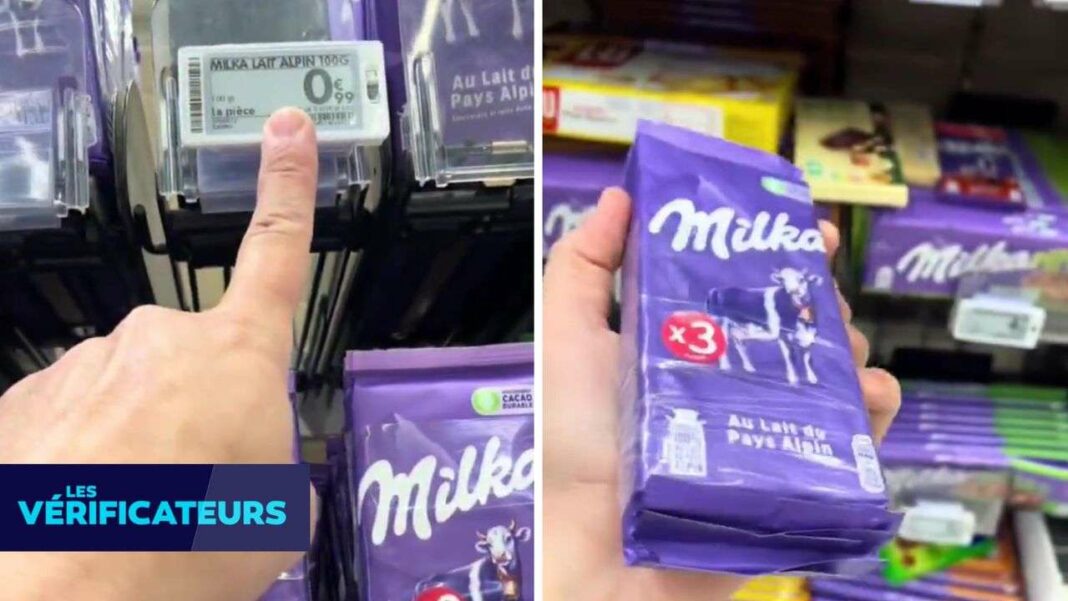Consumer confusion arises from chocolate packaging pricing, as a single bar costs 99 cents while a pack of three is priced at 4.27 euros, making the individual purchase cheaper. Although legal, these pricing strategies can mislead shoppers, prompting some to report concerns to the DGCCRF, which confirmed that such practices are permissible. Retailers are not required to offer better value in bulk, and marketing terms like “FAMILY FORMAT” can further obscure true costs, especially affecting budget-conscious families.
Consumer Confusion Over Chocolate Packaging Prices
“I can’t wrap my head around this pricing strategy and packaging,” a man exclaimed in a supermarket video, expressing his disbelief at the cost of chocolate. While checking out the aisle, he noticed a single bar of ‘Alpine’ milk chocolate priced at just 99 cents. However, the store also marketed a pack of three bars, but at a surprising price of 4 euros and 27 cents. This pricing leads to a curious discrepancy, as purchasing four individual bars would cost less than buying the pack.
Legal Yet Misleading Pricing Practices
Many online commentators weighed in on this issue, asserting that such pricing tactics are commonplace across various brands and food items. Some consumers, frustrated by the situation, reached out to the General Directorate for Competition, Consumer Affairs, and Fraud Control (DGCCRF). Nevertheless, the DGCCRF clarified that supermarkets operate within legal boundaries, as they are not violating any laws.
The key concern lies in the perception of promotions. Many shoppers may overlook these pricing variations, leading them to spend more on a multi-pack when they could save by purchasing the same quantity individually. In this instance, the price gap for the three bars amounts to 1 euro and 30 cents—a difference that could be seen in many other bundled products. “While it may not be fair, it is legal,” remarked Raphaël Bartlomé, legal director of UFC-Que Choisir, in a previous interview.
As the DGCCRF clarified, pricing is largely unregulated, allowing retailers to sell packs at higher rates than individual items. However, regulations require stores to present pricing information that aids consumers in making informed decisions. According to lawyer Marine Friant-Perrot, it’s essential for retailers to reference a unit price alongside the displayed prices, whether that’s per kilo or per liter. This requirement serves as a safeguard against misleading deals.
The Ministry of Economy outlines the responsibilities of major retailers, but it does not mandate that packs offer better value than individual products. Nonetheless, any marketing claims suggesting that a more expensive pack is a deal could be considered deceptive advertising practices.
To sidestep potential backlash, retailers often use terms like “FAMILY FORMAT,” “XXL,” or “MAXI FORMAT,” prominently displayed in stores, which organizations like Foodwatch often criticize. In April 2023, Foodwatch initiated a campaign to highlight these so-called “supermarket abuses,” primarily affecting families with limited budgets who are often misled by these larger formats. “Intuitively, one would expect bulk products to be more cost-effective per liter or kilo,” stated Foodwatch, which brought this concern to the attention of Bruno Le Maire, the former minister of Economy.
If you have questions or wish to report dubious information, please reach out to us at [email protected]. You can also connect with us on Twitter, where our team is active under the handle @verif_TF1LCI.
